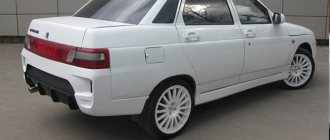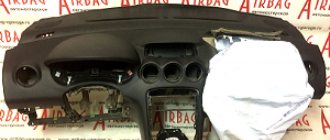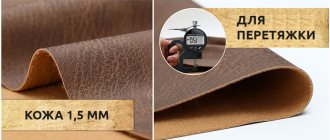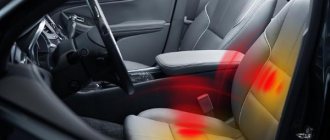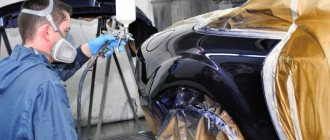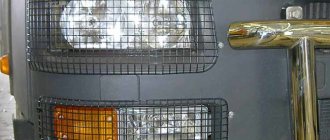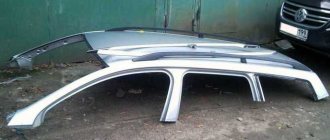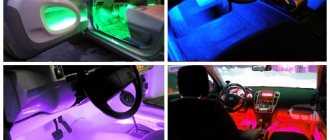Car seat reupholstery - a great way to restore the aesthetic appearance of the interior, because old, worn covers in the car can ruin the entire design. This is especially necessary for a light-colored interior, the upholstery of which has lost its brightness, become stained and cannot be cleaned. Fortunately, now there are many materials and tools that allow you to do the reupholstery yourself. This is not as complicated a procedure as it might seem at first glance; you just need to have basic technical skills and the necessary tools.
Do-it-yourself car seat reupholstery
DIY car seat reupholstery technology
Reupholstering car seats with your own hands is within the capabilities of diligent and persistent people. Since the average car owner does not have the skills to do this kind of work, everything needs to be done slowly, following proven technology.
Preparing to reupholster the seats
Before you start updating your car seats, you first need to do some simple preparatory work:
- Removing seats. Usually fastening is carried out with 4 bolts, but you must first disconnect the negative terminal of the battery in order to de-energize the security system (airbags). Under the seat, you also need to disconnect the electrical wiring terminals, if any, for example, from the electric seat heating.
- Each part of the standard case is signed with a regular marker. You can also indicate the name of the material that will be used in this area of the cover.
- Removing the standard cover from the chair. To carefully remove the old seat trim, you need to press the metal clips on the back of the chair.
- The old cover is cut at the seams into separate parts that will be used as patterns.
- Material calculation. Now each piece of the old cover can be measured and its area can be calculated. The total area of the material must be increased by 20-40%!, which depends on the accuracy of measurements and cutting options.
Making new cases from leather or Alcantara
To make new seat covers you will need some tools and materials:
- gel pen,
- scissors,
- sewing machine,
- foam rubber 5 mm thick,
- glue in a can,
- hammer.
The sequence of actions is as follows.
- Each piece of the old cover is placed on new material and pressed with weights. Use a gel pen to mark with short dashed lines. The marked elements of the new cover are cut out with scissors. When cutting, it is important to take into account such a feature of Alcantara as the direction of the pile. When all elements are combined, the result should be a surface with the same direction of the pile.
- Alcantara and leather are reinforced using fabric-based foam rubber. The connection of the cut parts with the foam rubber is done using glue. You cannot apply the adhesive composition with a brush or roller to the surface of the foam rubber. Therefore, the glue is sprayed evenly from the can.
- The next important step is stitching the patches together. It is important to ensure that the edges of adjacent elements are accurately aligned. This will require some skill in using a sewing machine.
- The seam flaps, spread to the sides, must be glued on the wrong side. First, excess strips of foam rubber and material are cut off, and the lapels are cleaned and degreased. All that remains is to apply glue and press the lapels together.
- An important point in reupholstering the seats will be beating off the seams with a regular hammer.
- The lapels are sewn with a double finishing stitch, and the free edges behind the stitching are not trimmed.
Installing a car seat cover
Installation of a new car seat cover is carried out in the following sequence:
- Before installing the new seat cover, you need to thread the straps. The product is turned inside out and straightened out. The cover is first pulled over the back of the seat.
- Now it’s the “seat’s” turn. Usually this stage does not cause any problems. You need to use plastic clamps threaded through special holes to pull the cover to the base of the chair and secure it by the spoke. The edges of the new cover are stretched evenly along the contour of the seat.
- The leather covering should be completed by heating the material with a stream of hot air. An electric hair dryer is used for this; the main thing is not to overdo it and not burn the case. Gradually drying, the material will stretch like a drum. After this, each chair is steamed using an iron and a damp cloth. Thanks to these thermal operations, the chair cover becomes taut and absolutely smooth.
- The final operation of reupholstering the seats will be to clean the light leather or Alcantara from glue residues, abrasions and fingerprints.
We recommend: Do-it-yourself instructions for changing engine oil
Carefully reupholstered car seats will please the car owner for a long time. During the update process, you can change the design of the car seats, as well as update the upholstery of the doors, ceiling and panels. The comprehensive tuning will change the shabby interior beyond recognition, add elegance to the car and increase its value.
Sequencing
How to adjust wheel alignment with your own hands: step-by-step instructions
To reupholster your car seats, follow the sequence of steps, and replacing the covers will not cause you any problems.
Step one. Remove old covers
The seats from the car must be removed to create enough free space for work. Remove old seat covers. This may not be as easy as it seems. Especially if it is pulled very tight. Much here depends on the quality of the fabric. Take your time and remove the fabric very carefully so as not to damage it. We will still need it.
Step two. Make a pattern for new covers
Separate the old cover at the seams. Spread new material on the floor and place parts of the ripped cover on it. Reinforce some parts, those that have traces of factory reinforcement, with foam rubber using spray adhesive.
Step three. Sew the parts
Now all the parts need to be carefully sewn together. The edges of the parts must be connected so that they fit snugly against each other.
Step four. Finish the seams
You are making covers for your car, so put aside your laziness and work conscientiously. The back seams need to be glued for strength and stitched with a finishing stitch. If there are small uneven edges, carefully trim them with scissors.
Step five. Pull the cover
Now you need to reupholster the car seats. Turn out the finished cover, straighten it and put it on the seat frame. Press it firmly against the frame and pull the loose ends of the material through the holes in the seat cushion.
Step six. Dry the material with a hairdryer
Now it's time to grab a hairdryer. Use a hair dryer to dry the seat covers as much as possible. As the material dries, it will stretch. To make the surface of the seats perfectly smooth, use the vertical steam function of the iron. After complete drying, the material will be perfectly stretched. Of course, provided that you did everything correctly.
Step seven. Install car seats
Assemble the seats and install them in the car. Remember that seats can only be installed in a car fully assembled. This way you can immediately evaluate the results of your work.
Required tools and materials
If you have already decided on the material in which you will reupholster the interior, it’s time to calculate its approximate volume. In total you may need from 6 to 25 meters. But these figures are very approximate: it all depends on the specific car model. So, a crossover or SUV will require much more material than a coupe car. Therefore, do not be lazy and measure the length of the ceiling, the length of the cushions and backrests, the size of the front panel, as well as the width and height of the car doors. Add up all the resulting numbers and add at least a meter as an error. Believe me, you will need it.
In addition to the material itself, you will need other tools:
A set of screwdrivers with straight and Phillips slots for dismantling some elements;
- foam;
- sandpaper;
- degreaser;
- meter tape;
- masking tape;
- cling film;
- marker;
- chalk;
- stationery knife and sharp scissors;
- reinforced threads for stitching leather products;
- sewing machine with a needle and foot for working with leather;
- special high-temperature glue for leather;
- rollers and spatulas with rubber cloth;
- industrial dryer.
Separately, I would like to dwell on the choice of glue. Do not use Moment glue or other similar superglues. Universal glue 88 is often used for reupholstering, but it also has a number of disadvantages. Buy quality glue that can withstand high temperatures. MAH is well suited for these purposes. Its price is quite high, but if you don’t want to see the coating swell and come off after just a few months, spend money on it.
Use high temperature adhesive to bond leather to plastic parts.
Prerequisites for the restoration of chairs
Foreign car manufacturers have long paid special attention to the quality of driver's seat upholstery. Torn seats distract a person driving a car and prevent them from concentrating on the road
He constantly fidgets, gets nervous, trying to get into a better position. Comfortable seats give you confidence and allow you to drive comfortably, having fun and enjoying life.
When doing it yourself, every car owner must be able to handle a needle and thread, and have an understanding of the cut of the material. You can take the car to experienced specialists. They will dismantle, agree with you on the choice of material, carry out all the work, repairs, and install new cladding in place. If you want to save money and do what you love, repair the seat upholstery for your car yourself.
Signs of worn car seats that require upholstery repair:
- abrasions of the casing;
- scuffs, cracks in armrests;
- breakage of internal springs;
- torn threads, piping;
- broken frames;
- gasket ruptures;
- oil, grease stains.
All these defects are striking; the driver and passengers feel discomfort. This means that the moment has come when it is necessary to begin repairing the entire car seat trim with your own hands. The task is complex and time-consuming, but the result is amazing. Increases the driver's self-esteem, asserts his authority in the family, in front of colleagues, and fellow motorists. After all, he did it himself.
Preparing for reupholstery
Working on reupholstery requires perseverance, patience and following recommendations.
Before you start updating the seats, it is necessary to carry out preparatory work:
- dismantle the seats, which are secured with four bolts. Before doing this, disconnect the battery terminal and electrical wiring terminals.
- remove all fragments of old covers and sign them. In addition, it is better to write the name of the material that will be replaced in this place.
- remove the standard cover from the seat, first bend the metal clips from the back. cut the cover at the seams, it will be used to cut a new one.
- calculate the material. Take measurements of each part of the old cover. Make a pattern, leaving at least a few centimeters at the edges.
Installing a new car seat cover
Installing the cover on a car seat is carried out in the following sequence:
The last and most important stage of reupholstering car seats will be cleaning from glue, fingerprints and abrasions of Alcantara and light leather.
Carefully reupholstered car seats will please the vehicle owner for a very long time. During the update procedure, you can slightly change the design of the car seat and update the upholstery on the doors, panels and ceiling. Comprehensive tuning can change your tired interior beyond recognition, adding elegance to your car, and will also increase its value. Before you decide to reupholster the car interior, read and study some of the recommendations for this work.
Source
Soft backing
A soft lining can be glued to the back of the upholstery. It is especially relevant for the skin. This is a foam material with fabric. The material helps to hold the thread, and it does not fall through the material when sewing. This soft material performs three functions. Firstly, it helps to eliminate wrinkles on the fairly thin upholstery material, and secondly, the soft lining gives better tactile sensations to the surface. Thirdly, this material provides a smooth, even appearance and fullness of the upholstery after installation.
The soft backing is glued with special glue from a can with the soft part to the upholstery, and the fabric outside. The principle of gluing and leveling is the same as when repairing ceiling trim. In addition to gluing, you can additionally stitch along the very edge of the upholstery part. This way the backing is guaranteed not to come off. After this, the excess along the edges of the upholstery part is cut off and the individual upholstery piece can be considered finished.
Workplace
Do-it-yourself seat reupholstery requires sufficient space to disassemble and place the removed seats.
Take the time to design your desktop. It should be even, smooth and large enough to easily roll out the material on it. The table should be well lit. It will be convenient for the material table to be directly connected to the table on which the sewing machine is installed. So, when working with large pieces of upholstery, the table will support the material while sewing. It will be convenient to mark and cut the material on the table.
Advantages of reupholstering car seats in a studio
If you need to update the seats in a short time and the money issue is not of decisive importance, then it is best to contact a specialized sewing studio.
We recommend: What are the main reasons for engine overheating on a VAZ-2109
Among the main advantages of reupholstering seats in a workshop are:
- work performed by qualified specialists with many years of experience,
- use of proven quality materials,
- choosing the preferred option,
- providing a guarantee for the service,
- Minimum turnaround time for reupholstery.
But all these advantages of reupholstering in a workshop can be reduced to zero due to the high cost of the service, which may not be affordable for a simple car enthusiast.
What can be done
If the salon has lost its attractive appearance, you can go one of several ways:
Let it be as it is. Not the best solution, because when worn, the upholstery deteriorates even faster:
- Use T-shirts and covers. They will only hide existing shortcomings. If you expect long-term use or then want to sell the car at a profit, it would be better to restore the interior
- Contact the studio. A good option, but very expensive. In addition to paying for materials, you will also have to pay for the work.
- Pull it yourself. It doesn't save time, but it saves money. You will only have to spend money on consumables.
Which option to choose, everyone decides for himself. Even partially self-performed reupholstery will be much more economical than completely entrusting the work to specialists. They can help you make the covers, and you can do the dismantling, reupholstery and assembly yourself.
Selection of cladding material
Natural and artificial automobile leather are best suited for reupholstering car interiors. Both materials are characterized by high performance qualities, which sets them apart from the less popular carpet or velor. At the same time, leather covering is much easier to do with your own hands than, for example, flocking the interior. The reason for this is the high elasticity of the material, as well as the usual set of necessary tools. Recently, motorists are increasingly choosing Alcantara. However, the price for the original material is almost higher than the cost of genuine leather, while its cheaper substitutes cannot boast of high quality.
For these reasons, we will dwell in more detail on materials such as genuine leather and eco-leather.
Genuine Leather
Genuine automobile leather will become a real decoration of the interior. Is it possible to imagine a luxury car covered with a hard carpet or covered with multi-colored vinyl film?
However, a beautiful appearance is not the only advantage of genuine leather. It can withstand both frost and heat. Cracks will not appear on it due to temperature changes. Another positive property is resistance to ultraviolet radiation. Many materials fade in the sun, so after just a few years of use, the control panel and front seats, which are located directly under the windshield, become noticeably paler compared to the rest of the trim. But this will not affect natural leather. You can be sure that the interior will retain its color.
The interior of the car, covered in leather, looks expensive and solid.
Do not forget about the fire resistance of the material. Accidentally dropped cigarette ash will not harm the interior. Moreover, genuine leather does not absorb foreign odors, which is very important for those who like to smoke inside the car. The skin is also not afraid of other mechanical damage: it will take a lot of effort to scratch or tear such a coating.
On sale you can find material of various textures, including crocodile or ostrich leather. However, when choosing between smooth and perforated leather, it is better to give preference to the latter type. It is softer and more pleasant to the touch. In addition, its wear resistance is noticeably higher.
Perforated leather is softer and more pleasant to the touch
The only thing that can discourage you from upholstering the interior with genuine leather is its price. Its use becomes especially risky when you tighten it yourself. After all, if at some point something goes wrong, a large amount will be thrown away. If you are not ready to take such a risk, turn your attention to eco-leather.
Eco leather
Currently, artificial leather has practically received a second life. Outdated technologies have been replaced by newer ones. Low-quality leatherette is no longer used for upholstery of car interiors, giving way to eco-leather.
Eco leather is a synthetic material. During its manufacture, a thin layer of polyurethane is applied to a woven cotton or polyester base. At the same time, the characteristics of the material directly depend on the thickness of the layer: the thicker it is, the stronger the eco-leather is, but at the same time tougher. For car upholstery, the optimal thickness of polyurethane was experimentally determined.
The material received the name “eco leather” for two reasons. Firstly, during operation it does not emit toxic substances that adversely affect vehicle passengers. And secondly, after its invention, the number of animals killed for their skin decreased sharply, which pleased animal rights activists.
In terms of its external qualities, eco-leather is very close to its natural ancestor. Using special technologies, embossing is applied to the material, making it quite difficult to distinguish it from genuine leather. Moreover, the higher the price of the material, the more identical their appearance.
The appearance of eco-leather is very close to the appearance of natural material
Eco leather has a rich palette. You can use classic black or extreme red in the interior, or you can combine colors to your liking. But coloring natural material will cost you a pretty penny.
In terms of other characteristics, artificial leather is also not inferior to natural leather: wear resistance, moisture resistance and fire resistance are its strong qualities. Both of these materials remain clean for a long time, and if necessary, stains and dust can be easily removed with a wet sponge and soft cloth. It's no secret that many people are allergic to animal fur and skin, as well as the chemicals used in tanning. Eco-leather is perfect for them, as it is absolutely hypoallergenic.
We recommend: Do-it-yourself replacement of the pump on a VAZ 2107
At the same time, the cost of eco-leather is several times lower than natural leather, which makes it more accessible to the general public. You can safely take one or two meters in reserve if you are doing self-upholstery for the first time. The remaining material can be used to make a cover for the steering wheel, gear shift lever and other small elements of the car.
Regardless of whether you choose natural or eco-leather, purchase the material from specialized automotive stores. There are many reasons why leather used for making furniture, clothing and shoes is not suitable for upholstery. For example, its instability to temperature changes and reduced wear resistance.
Both natural and artificial materials have drawbacks that may seem insignificant to some. In cold weather, the coating quickly cools down, and in the sun it gets very hot. Accordingly, this slightly reduces the level of comfort. Whether it is worth paying attention to this feature of materials is up to you to decide. In any case, leather is one of the best solutions for interior decoration of a car.
Genuine Leather
Seats covered with genuine leather look solid and are a real decoration of the interior, but this is not the only advantage of the material:
The only disadvantage of using genuine leather is the high cost of the material, which can be especially unpleasant for those who are doing it for the first time. After all, in case of an error, a large amount of money can be lost.
On sale you can find leather of various textures, but it is better to give preference to perforated material - it is more wear-resistant and soft.
Putting on new upholstery and assembling seats
- When all parts of the upholstery are sewn together, it can be put on the seat and back.
- When installing the upholstery, restore all fasteners that were cut off when disassembling the seat. As you assemble, refer to the photographs taken while disassembling the seats.
- The traditional method of fastening upholstery is the use of special rings. As an alternative method for fastening, you can use nylon zip ties of the required size (10 - 20 cm). They must be of good quality and not break.
Start tightening the seat back upholstery by turning it in the opposite direction and gradually unroll it.
- The upholstery on the back of the seat is a little more difficult to install than on the seat itself. It takes some effort to tighten it. The upholstery should be with the back side facing out. It is placed on the upper part of the backrest and unfolds in stages.
- When putting on leather upholstery, it must be treated with hot steam. This is necessary so that the skin “sits” well and tightly into place. Exposure to heat dries out the skin. When heated, the skin weakens and becomes much more pliable. After cooling, it contracts and tightens the seat. If you don't have a steam generator, you can use a hair dryer as an alternative. When using a hair dryer, adjust the temperature so as not to overheat your skin. If there are no adjustments on the hairdryer, then change the heating by changing the distance from the surface. When heating, you don't need to stay in one place for a long time. Faux leather is less sensitive to heat, but also requires caution when heating.
- A safer option would be to steam the inside of the upholstery before putting it on. This way the steam will not damage the front part. After drying, the leather will lie flat on the seat, without folds or wrinkles.
- If the seat has an airbag, the battery must be disconnected when connecting the seat plugs.
Eco leather
It is a synthetic material, very close in appearance to natural leather. In terms of performance characteristics, eco-leather is also not inferior: it is wear-resistant, fire-resistant, moisture-resistant, easy to care for and, moreover, environmentally friendly and hypoallergenic. At the same time, the cost of such material is several times lower than genuine leather, which allows you to purchase several meters in reserve without compromising your budget.
Attention! Regardless of the material chosen, you need to purchase it only in a specialized store: leather for other purposes does not have the necessary properties.
Working with other parts
Upholstering other interior elements, such as the dashboard or door panels, with your own hands is much easier to do.
First of all, the material is shaped into the part. To do this, the skin is soaked for 2-3 hours in warm water, but not in boiling water. The material is then applied to the part, stretched over the protruding parts and dried with a hairdryer in sections to smooth it out. You can first mark the fitted part into sections - the quantity determines the accuracy of the work.
After drying, the skin is removed, it will shrink a little as it cools. The part and material are treated with glue, then the material is applied to the part and blown with a hairdryer in sections, as in the first case.
Despite the fact that the finishing of panels is much simpler in comparison with the covering of seats, in order to competently carry out this work, some features must be taken into account. For example, it is necessary to maintain the functionality of the airbags. To do this, the material is cut from the inside or completely cut along the border of their opening, and then an easily torn seam is applied. If this is not done, in the event of an accident the airbags may deploy late or not deploy at all. This applies in most cases to the dashboard, and often also to the door panels in the case of side airbags.
The path of professionals
It's a common phrase in advertising for tuning companies. “We employ professionals.” Few people ask where specialists come from. If you disassemble the interior of your car, replace the trim and put it back together again, things will go faster with a second car. This is how they find a new profession.
The service requires accuracy from performers. All operations are performed manually. In large companies, people are trained before entrusting an order.
In large cities, successful companies open training centers. Anyone can learn a profession and open a business. After training, you will be able to finish or restore the interior of your car at a professional level.
